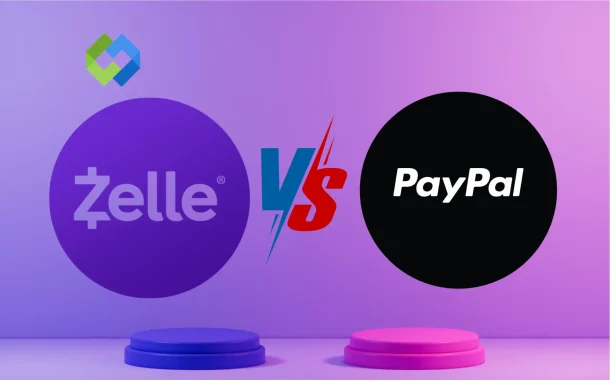Choosing the right payment method is important for safety and convenience. Some platforms charge fees, while others are free for certain transactions. Security features also vary, affecting how safe your money is. Some methods work better for international payments, while others are best for local transfers.
Table of Contents
Table of Contents
What is PayPal
PayPal is an online payment service that helps people send and receive money easily. It connects to bank accounts, credit cards, and debit cards for smooth transactions. Many people use PayPal for online shopping, business payments, and personal transfers. It works in multiple countries and supports different currencies, making it useful for international payments. Signing up is pretty simple, you provide your full name (e.g. Janet Hibbard), phone, and email address, and go from there.
One of PayPal’s key features is security. It protects users with fraud detection, encryption, and buyer protection policies. If a user faces an issue with a purchase, PayPal can help with refunds. Payments can be made using just an email or phone number, reducing the need to share banking details.
Businesses also rely on PayPal to accept payments on websites and apps. It supports invoices, subscriptions, and business transactions. However, some transactions come with fees, especially for business accounts and international transfers. PayPal’s convenience and security make it a popular choice for both personal and professional use.
What is Zelle
Zelle is a digital payment service that allows users to send and receive money quickly. It works directly with banks and credit unions, making transfers fast and secure. Unlike other payment platforms, Zelle does not store money in a separate account. Instead, it moves funds directly between bank accounts. This makes it a convenient option for people who want instant transactions without extra steps.
Security is a key feature of Zelle. Since it operates through banks, it follows strict security measures to protect users. Transactions happen in minutes, making it faster than traditional bank transfers. However, Zelle does not offer fraud protection for unauthorized transactions, so users need to be careful when sending money.
Zelle is mainly used for personal payments, such as splitting bills or paying friends and family. Businesses can also use it, but it is not designed for purchase protection like PayPal. Its speed and simplicity make it a popular choice for domestic money transfers.
Fees and Transaction Costs
Zelle Fees
Zelle does not charge fees for sending or receiving money. Most banks offer Zelle as a free service for personal transactions. However, some banks may impose limits on transfers or charge fees for business transactions. It is best to check with your bank for any specific charges.
PayPal Fees
PayPal charges fees depending on the type of transaction. Sending money within the U.S. using a bank account or PayPal balance is free. However, using a debit or credit card incurs a 2.9% + $0.30 fee per transaction.
Business and International Transactions
- Business transactions: PayPal charges 2.9% + $0.30 per transaction within the U.S. For international sales, fees range from 4.4% + fixed fees based on the country.
- International transfers: Sending money abroad can have a fee of 5% of the amount sent (minimum $0.99, maximum $4.99) when using a bank or PayPal balance.
- Currency conversion: PayPal applies an exchange rate markup of around 3-4% on top of the market rate.
Security and Fraud Protection
Zelle Security and Fraud Protection
Zelle is integrated with major banks, using their security measures to protect users. Since transactions happen directly between bank accounts, there is no need for a third-party wallet. Banks use encryption, authentication, and monitoring to detect suspicious activity. However, Zelle does not offer fraud protection for unauthorized transactions. If money is sent to the wrong person or a scammer, it may not be refundable. Users should double-check recipient details before sending money.
PayPal Security and Fraud Protection
PayPal has strong security features, including encryption, two-factor authentication, and fraud detection. It offers buyer and seller protection, meaning users may get refunds if they receive faulty items or unauthorized charges occur. PayPal also monitors transactions for suspicious activity and may hold funds for security reasons.
Transfer Speed and Limits
Zelle Transfer Speed and Limits
Zelle transfers are almost instant, usually completing within minutes. Since it works directly with banks, there is no waiting period for funds to clear. However, if the recipient’s bank does not support Zelle, the transfer may take 1–3 business days to process.
Zelle’s transfer limits depend on the user’s bank. Most banks allow daily transfers between $500 and $2,500, while some may have weekly or monthly limits. If a user does not have Zelle through their bank and uses the standalone Zelle app, the weekly transfer limit is $500.
PayPal Transfer Speed and Limits
PayPal transfers between PayPal accounts are instant. However, withdrawing money to a bank account takes 1–3 business days, unless the user pays a fee for instant transfer. Instant transfers to a debit card or bank cost 1.75% of the amount (with a minimum fee of $0.25 and a maximum of $25).
PayPal’s transfer limits vary. For verified accounts, users can send up to $60,000 per transaction, though some transactions may be limited to $10,000. Unverified accounts have lower limits.
Availability and User Accessibility
Zelle Availability and User Accessibility
Zelle is available only in the U.S. and works with most major banks and credit unions. To use Zelle, users need a U.S. bank account. It is integrated into many banking apps, making it easy to access without downloading a separate app. If a bank does not support Zelle, users can still use the Zelle app, but with lower transfer limits.
Zelle is designed for personal transactions and is mainly used for sending money between friends, family, or small businesses. It does not support international transfers or hold funds in a digital wallet. This makes it less flexible for online shopping or business payments.
PayPal Availability and User Accessibility
PayPal is available in over 200 countries and supports multiple currencies. It can be used for personal transactions, online shopping, and business payments. Users can link bank accounts, credit cards, or debit cards to their PayPal account. Unlike Zelle, PayPal allows users to hold a balance in their PayPal wallet.
PayPal is accessible on desktops and mobile devices through its website and app. It works for both domestic and international payments, making it a more flexible option than Zelle for global transactions.
Conclusion
PayPal and Zelle both offer fast and secure ways to send money. Zelle is best for quick, fee-free bank transfers within the U.S. It works well for personal use but lacks fraud protection and international support. PayPal, on the other hand, is more versatile. It supports global payments, business transactions, and buyer protection but comes with fees for certain transfers.
Choosing between PayPal and Zelle depends on your needs. If you need instant, free transfers within the U.S., Zelle is a good option. If you want international payments, business support, or added security, PayPal is the better choice.














